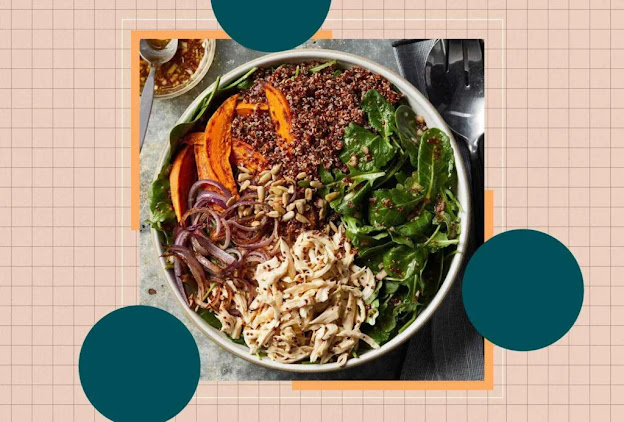Tired of the same old brown corn? Looking to increase your fiber diet without sacrificing taste? Many tasty and nourishing high-fiber carbohydrate varieties can give you the same wellness advantages. In this article, we'll examine 7 dietitian-approved selections that offer more fiber than colored corn.
The Benefits of Fiber
A high-fiber nutrition offers numerous health benefits. According to Sheri Gaw, RDN, CDCES, a registered nutritionist and director for Dietitian Insights," A diet that includes lots of fibers from fruits, vegetables, whole grains, beans, nuts, and grains is associated with a lower risk of diabetes, heart disease, defense problems, and some types of cancer".
Fiber is incredibly important for maintaining overall well-being. " Fiber acts as a broom sweeping through the system to help preserve our standard and remove waste materials", explains Rhyan Geiger, RDN, a Phoenix-based nutritionist. It can even assist in preventing cholesterol from being absorbed to promote brain health.
Moreover, fiber takes longer to process, increasing feelings of fullness and supporting robust blood sugar levels, which can lead to a healthy weight.
7 High-Fiber Carbs That Outshine Brown Rice
- Special Potatoes: These healthy, edible fruits pack a punch of grain, with 4 ounces in every 1/2 cup serving of mashed sweet corn. They are also rich in antioxidants and other safe ingredients that help reduce corrosion, disease, cancer, and brain damage.
- Barley: This full corn offers a nutty flavor and a grain increase. 3 grams of fiber are present in a 1 / 2 cup serving of fried grain. Due to the soluble fiber known as beta-glucan, which helps capture LDL lipid and stop uptake during digestion, wheat is especially helpful for brain health.
- Quinoa: Brown rice and rice are both a dynamic whole grain that has more protein and fiber. It is also a gluten-free perfect source of protein. Quinoa cooked to a 1/2-cup has about 2.66 grams of fiber. Beyond fibers, quinoa contains active compounds with oxidative and anti-cancer properties. Consider using quinoa as a substitute for colored corn in stir-fries, soups, stews, casseroles, or sandwiches.
- Buckwheat: Buckwheat, a gluten-free corn, offers more fiber than colored grain and is surprisingly easy to prepare. About 2.5 grams of fiber are present in a prepared wheat serving that is 1/2-cup. In addition, wheat flour has four times as much fiber as all-purpose white bread. Also, wheat contains the phytochemicals resveratrol and flavonoid, antioxidants known to reduce swelling. Enjoy wheat as a side dish or in gluten-free foods like pancakes.
- Green Peas: These fibrous vegetables are rich in both soluble and insoluble fibre, offering 4.5 kilos per 1/2-cup prepared offering. Insoluble fibers promote healthy metabolism by adding bulk to the bench, while liquid fiber helps lower cholesterol, blood sugar, and disease.
- Whole-Wheat Pasta: Swapping refined spaghetti for whole-wheat spaghetti can drastically increase your fiber diet. A 1/2-cup of fried whole-wheat pasta has significantly more than 2 grams of fiber. More vitamins and minerals are found in whole grains than in refined particles. Enjoy whole-wheat spaghetti nice or in cool pasta salad recipes.
- Black Beans: Dark seeds are a great source of fiber, offering around 9 grams per 1/2-cup offering. Additionally, they are a wealth of proteins and other necessary nutrition. Use black seeds into your meals by adding them to soup, salads, or tortillas.
The Bottom Line
Beyond colored rice, there are plenty of ways to increase your intake of fiber. A high-fiber nutrition, including products like sweet potatoes, wheat, quinoa, buckwheat, natural vegetables, whole-wheat pasta, and black seeds, offers numerous health benefits. By incorporating these fiber-rich products into your dishes, you can increase your digestive health, lower your risk of chronic diseases, and support a healthy weight.
More Instructions for Including High-Fiber Carbs in Your Diet
- Gradually increase your fiber diet: To avoid digestive pain, slowly increase your fiber intake over time.
- Stay hydrated: Drinking plenty of water is essential for optimal fiber digestion.
- Find the foods you enjoy the most and incorporate them into your regular meals by experimenting with different high-fiber foods.
- Consider a fiber supplement: If you're struggling to meet your daily fiber needs, a fiber supplement can be helpful. However, it's always best to consult with a healthcare professional before starting any new supplement.
You can reap the many health advantages of fiber while also adding variety and flavor to your meals by following this advice and incorporating more high-fiber carbs into your diet.

Comments
Post a Comment